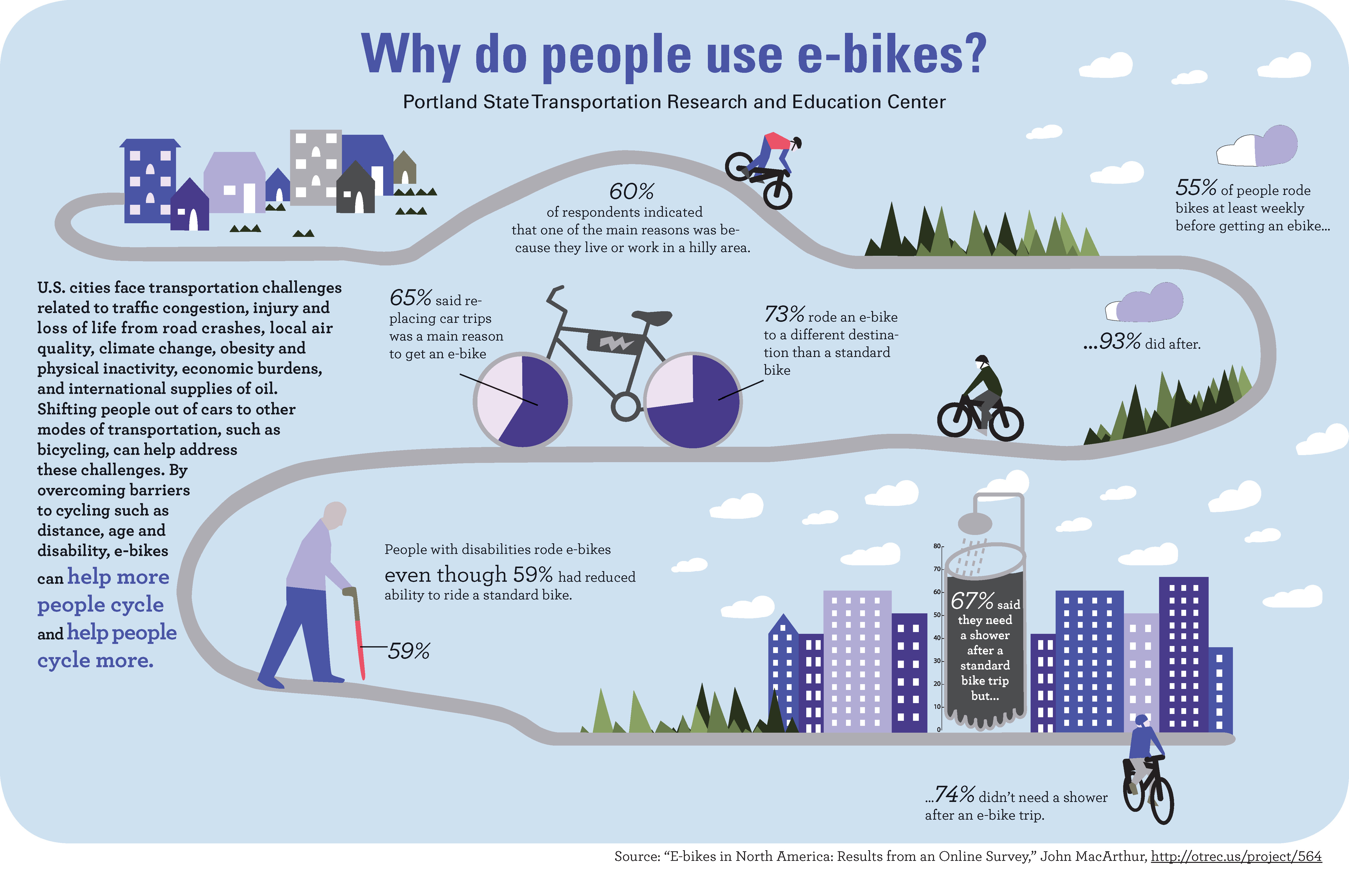E-Bike Classifications Explained: Understanding The Implications Of Each Category

Article Produced By-Lohse Lopez
If you're considering purchasing an e-bike, understanding the various courses is type in making an educated decision. You could be stunned at just how each class uses one-of-a-kind functions that accommodate different riding choices and lawful requirements. From pedal-assist alternatives to throttle-controlled models, each class has its benefits. So, prior to you decide on the best e-bike for your demands, it's vital to grasp the distinctions in between Course 1, Course 2, and Class 3 e-bikes.
Class 1 E-Bikes
Class 1 E-Bikes are specified as pedal-assist electric bicycles that provide support just when you pedal, stopping to do so once you get to 20 mph. These bikes are best for those trying to find a little extra boost while still wishing to get some exercise. Course 1 E-Bikes offer a smooth transition between pedaling and electric aid, aiding you dominate hillsides and fars away with ease. The motor starts as soon as you start pedaling, supplying a natural and easy adventure experience.
Among the crucial advantages of Course 1 E-Bikes is that they're allowed on most bike courses and routes where standard bikes are permitted. e bike shops near me can discover brand-new routes and appreciate the open airs with no constraints.
Furthermore, these bikes are green and supply a lasting mode of transport, reducing your carbon impact while still obtaining you to your destination effectively.
Class 2 E-Bikes
Moving on from the pedal-assist characteristics of Class 1 E-Bikes, Class 2 E-Bikes present a new aspect into the electrical bicycle realm. These e-bikes include a spin throttle function, allowing you to ride without pedaling in any way. With this addition, you have the choice to merely engage the throttle and let the motor do the work, moving you ahead effortlessly.
Class 2 E-Bikes are optimal for motorcyclists who may need a break from pedaling or call for assistance when beginning with a full quit. This attribute makes them particularly appealing for individuals with minimal mobility or those who want an even more leisurely riding experience.
Nevertheless, it's important to keep in mind that Course 2 E-Bikes are still governed by a speed limitation of 20 miles per hour, ensuring security and compliance with guidelines.
Class 3 E-Bikes
For motorcyclists looking for a more vibrant electrical cycling experience, Class 3 E-Bikes offer enhanced rate and efficiency compared to their Class 1 and Course 2 counterparts. Course 3 E-Bikes are known as "rate pedelecs" and can reach speeds of approximately 28 mph, providing a thrilling adventure for those trying to find an extra boost. These bikes come furnished with a pedal-assist system that starts when you start pedaling, making it less complicated to maintain greater speeds with much less effort.
One essential attribute of Course 3 E-Bikes is that they aren't restricted to bike lanes just; they can likewise be made use of on roads where the speed limit is 30 miles per hour or lower. official source enables bikers to navigate with web traffic more effectively while still appreciating the benefits of electrical aid.
Nevertheless, it's important to keep in mind that some locations might have particular regulations relating to using Class 3 E-Bikes, so always check neighborhood regulations prior to hitting the road.
Verdict
So, now that you comprehend the differences between Class 1, 2, and 3 E-Bikes, you can make a notified decision on which kind ideal fits your needs. Whether you favor pedal-assist, throttle function, or higher speeds, there is an E-Bike class out there for you. Keep in mind to consider your regional laws and personal preferences prior to making your option. Satisfied riding!

